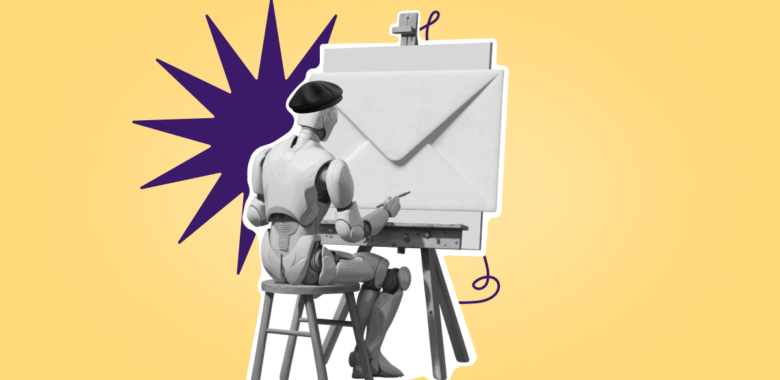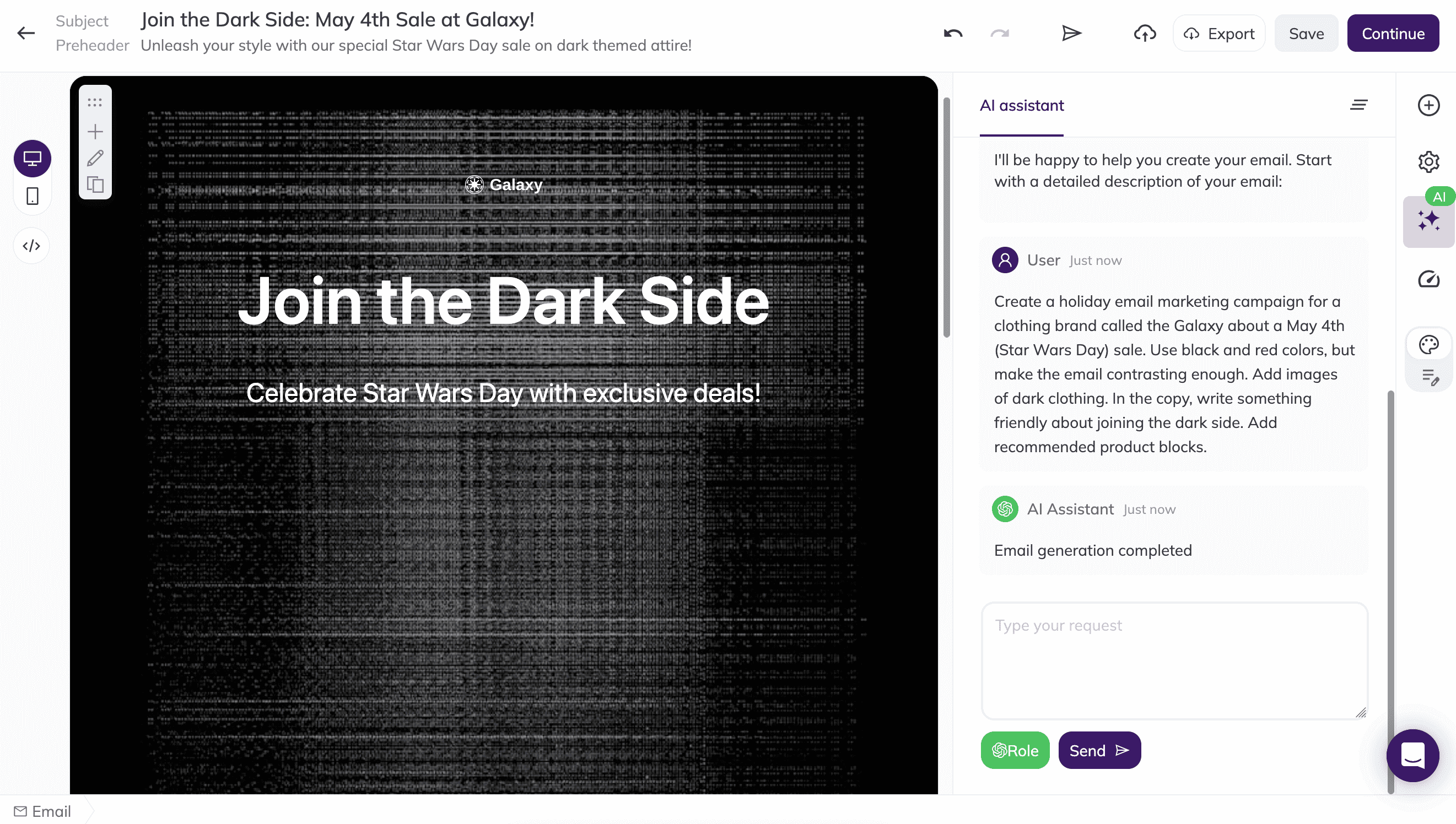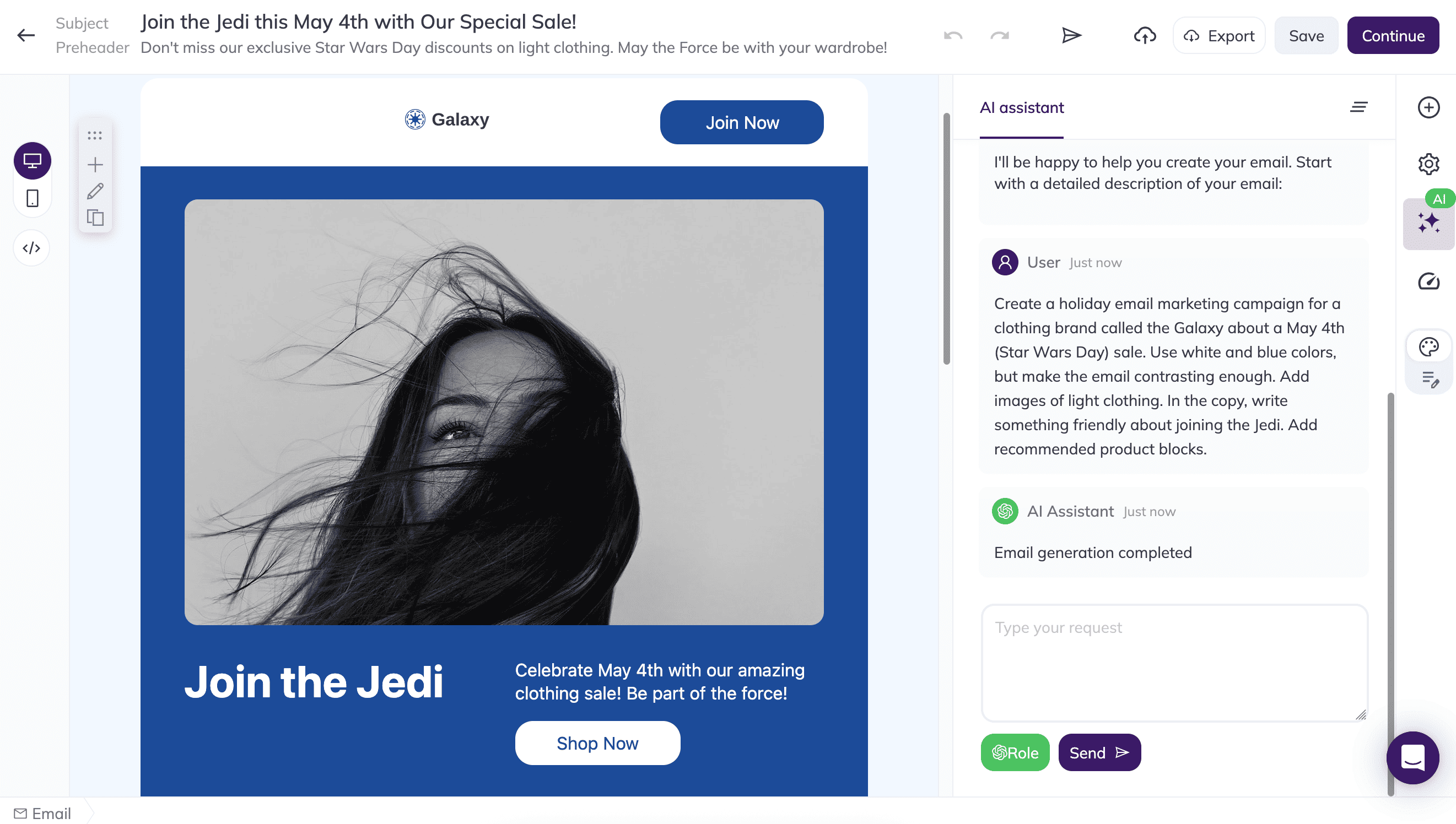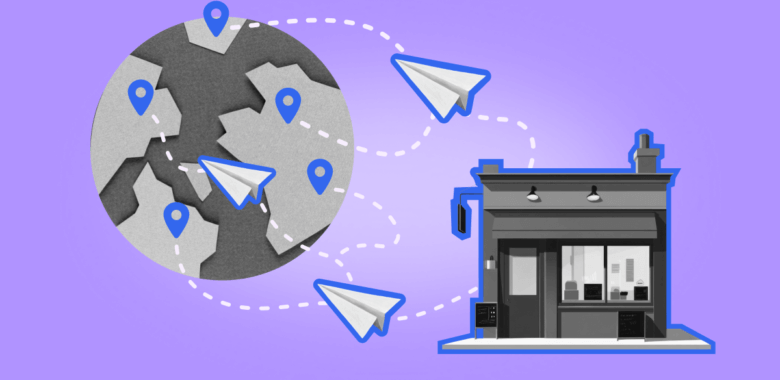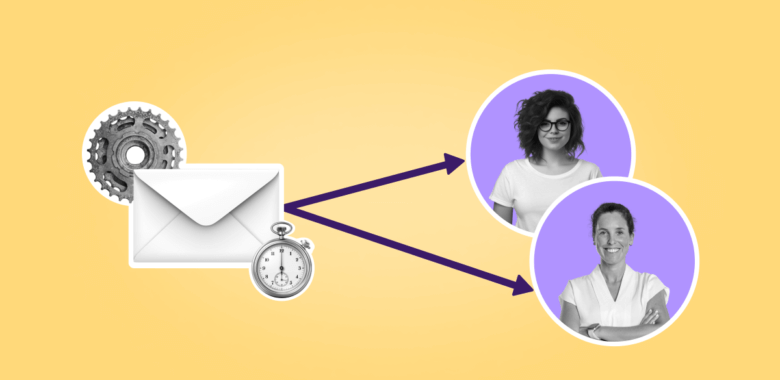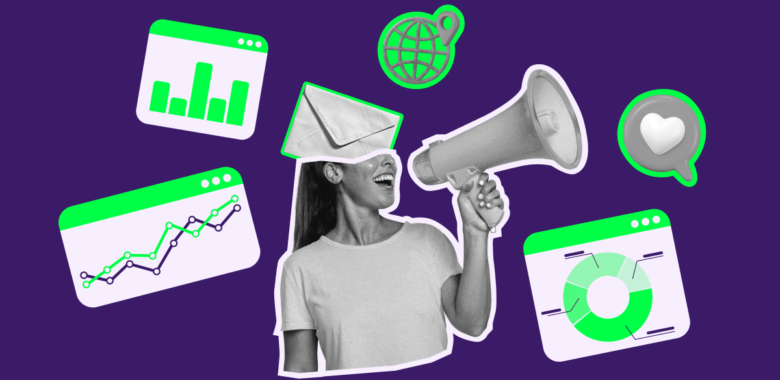Selzy has a free (yes!) AI email assistant that not only generates copy and analyzes what you’ve written, but also creates entire HTML email layouts complete with images! Use our platform and see how you can improve your email marketing process.
Generative AI for email marketing: What’s the deal?
According to statistics, 69% of marketers are already using AI tools in their work. From specialized platforms to AI in email service providers and chatbots, AI-based email marketing has been on the radar for a while now.
Over half of Selzy users are sure that AI can improve email newsletters. Some of its use cases include email copywriting and image generation, enhanced segmentation, and hyper-personalization. Recently, it has become possible to create a complete campaign — from the HTML template to the body copy — from a single prompt, in an AI email generator.
